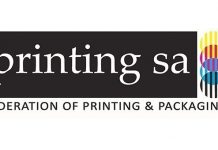PIFSA outlines the requirements of the Air Quality Act in the following article:
According to Section 21 of the National Environmental Management: Air Quality Act , 2004 (the Act) the Minister must publish a list of activities which result in atmospheric emissions and which the Minister reasonably believes have or may have a significant detrimental effect on the environment, including health, social conditions, economic conditions, ecological conditions or cultural heritage. A Notice was published in April 2010 and a number of activities have been listed. In respect of each activity minimum emission standards have been identified and persons undertaking those activities have to comply with the emission standards.
Before the final Notice was promulgated a draft Notice was published which included printing as a listed activity. In response to this, PIFSA, PACSA and the PCA submitted an objection to the DEA in 2009 regarding “Printing Works” becoming a listed activity in terms of Section 21 of the Act. The result of that submission was that printing was excluded as a listed activity. The Department of Environmental Affairs (DEA) however now intends including printing as a listed activity.
The consequences of listing are that without an atmospheric emission licence you may not conduct an activity anywhere in the Republic or if the activity is on a provincial list anywhere in that province. There are also cost implications in respect of activities being listed in terms of s21 of the Act. These include costs relating to the implementation of the appropriate technology in order to comply with the limits, as well as costs to monitor stack emissions and licence costs.
So what does your solvent usage have to do with this?
The DEA has been engaged with PIFSA and members of the Printing Industry in respect of the proposed description of the activity (Printing Works) as well as setting the threshold level whereby all printing which falls within that threshold will be required to comply with the prescribed emission limits.
The DEA originally set the threshold for Printing Works ( Printing works have been defined as Processes in which publication rotogravure, product and packaging rotogravure, wide web flexographic printing presses or any other printing methods are operated) to include all printing works which use more than 25 tonnes of solvent per annum.
In the event that a facility consumes more than 25 tonnes of solvent per annum, all vents that contain VOCs (i.e. solvent vapours) must comply with a maximum concentration defined in the proposed standards below.
Category 11: Printing Works (Draft presented by DEA to members of the PIFSA Environmental Interest Group on the 13 February 2012 and dated 7 February 2012)
Please see the table for an outline of the above.
We believe the reference to ‘particles’ and ‘oxides of nitrogen’ refers to the exhaust gases from thermal oxidation equipment which we believe may need to be installed in order to meet the VOC limits from certain vents.
We also understand that the solvent threshold may have recently been amended to 15 tonnes in an updated version of Section 21 (dated 27th March 2012), suggesting the number of printing works affected by this regulation may be significant.
Compliance time frames:
New Plants: Compliance to new plant value as from the date of publication.
Existing Plants: Compliance with existing plant value within 5 years from date of publication.
Compliance with new plant value within 10 years from date of publication.
Based on this draft proposal it appears that even small printing facilities would fall within the threshold and be required to comply with the limits. Initial investigations show that VOC control systems are expensive and that costs to comply with the proposed legislation could amount to costs between R2 and R10 Million per plant.
This is at present a draft proposal from the DEA and will be used as a base for further research and discussion.
PIFSA Review of the Impact of the Proposed Section 21 Regulations
PIFSA and the PIFSA Environmental Interest Group (PEIG) have engaged with the Department of Environmental Affairs (DEA) and submissions were presented to the DEA on the 9 March 2012, through Ms Tina Costas of Norton Rose South Africa. The submission included a roadmap or critical path that, in the opinion of technical experts should be followed in order to make informed decisions about the thresholds and emission levels in respect of printing works. Industry and the DEA have agreed that a final submission will be made to the DEA in September 2012. The final submission will be based on a detailed study which will be undertaken by Wardkarlson Consulting, who are air quality experts, in conjunction with the printing industry. The investigations to be undertaken include the following:
– Identifying facilities for use as test cases for assessment.
– Determining typical concentrations of VOCs in exhaust gas in order to compare those to the proposed levels.
– Determining the impact of each selected facility on ambient air quality using a recognised Air Dispersion Method.
– Undertaking a detailed review of mainstream control devices.
– Defining constraints within the printing industry (economic, technical or otherwise) for the use of water based inks, coatings and adhesives.
– Assessing abatement options such as thermal oxiders, cryogenic recovery and carbon adsorption.
– Assessing current venting arrangements.
– Assessing EIA requirements and timeframes.
– Assessing cross media effects.

















